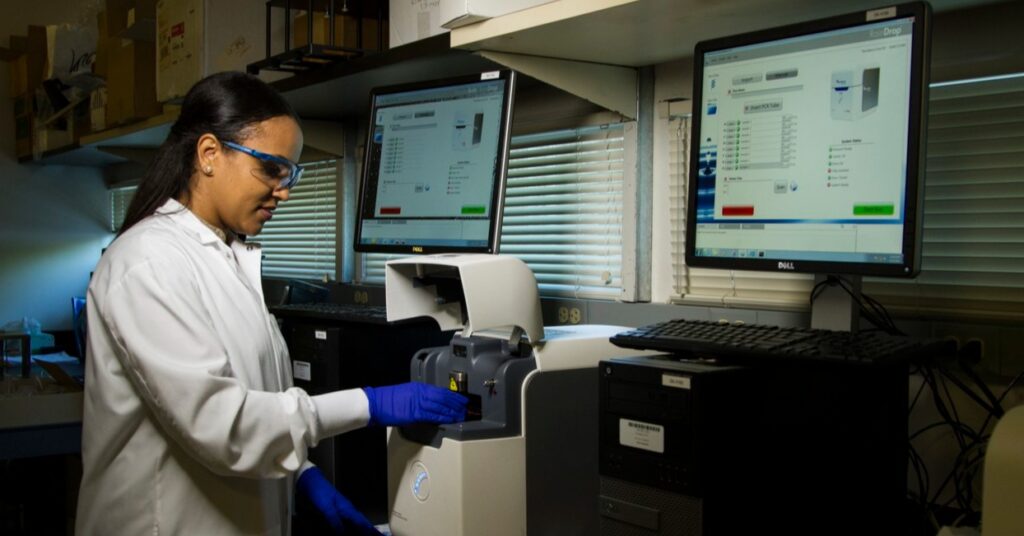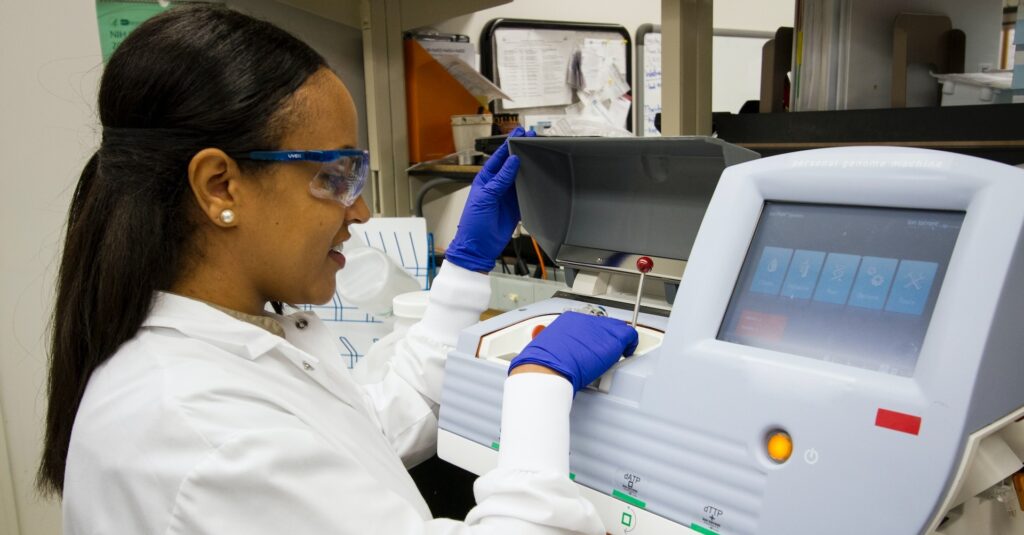
What Is the Epidemiological Triangle?
The epidemiological triad or triangle is an organized methodology used [...]

In 2000, the American Physical Therapy Association (APTA) announced that “by 2020, physical therapy will be provided by physical therapists who are doctors of physical therapy.” Wait, you may be wondering, they didn’t have to be doctors already? No, until 2017, a Master of Physical Therapy (MPT) or a Master of Science in Physical Therapy (MSPT) degree accredited by the Commission on Accreditation in Physical Therapy Education (CAPTE) qualified you to practice PT. No longer. Today, advanced physical therapy education programs in the United States offer only a Doctorate in Physical Therapy (DPT).
Not so long ago, you could become a physical therapist without even earning a bachelor’s degree. You could just hang out a shingle and open your doors for business. The 1953 Allied Health Professions Training Act raised the bar by requiring a bachelor’s. That’s where it stayed until 1979, when the APTA designated the master’s degree the minimum standard to practice physical therapy.
The steady elevation of physical therapy credentials tracks historic improvements in PT knowledge and practice. The science underlying physical therapy is considerably more advanced today than it has ever been. The medical profession also has delegated greater medical and administrative responsibility to physical therapists. More and more, this is a field requiring a doctorate-level degree program.
This most recent change doesn’t seem to have phased prospective physical therapists. A recent study conducted by the University of Iowa found that DPT programs compare favorably to MD programs in both burnout rates and “educational emotional climate.” And who wouldn’t prefer to be called “doctor”? Getting a DPT won’t be a cakewalk, but it won’t be as grueling as med school either.
Ready to find out more about what it means to commit to a DPT program? In this article about whether a Doctorate in Physical Therapy is worth it, we’ll cover:
Physical therapy has progressed significantly in the past fifty years as we’ve learned more about how the human body works. Physical therapists and their patients have benefited from this knowledge immensely, but it also means that PTs need more training than ever.
PTs have also greatly expanded their practice in recent years. As Baby Boomers grow older, there has been an increased demand for physical therapy in geriatrics. Technological advancements in neonatology mean preemies are viable earlier; these patients require physical therapy, among other care. The establishment of trauma centers has led to better survival rates in trauma cases. And there’s an increasing awareness of how PT can serve as a replacement for dangerously addictive painkillers and invasive procedures.
All of which is to say that numerous populations benefit from physical therapy. Seniors can live more active lives. People with physical issues can stay pain-free for longer. Preemies can overcome developmental delays more quickly. Trauma patients can go on to lead healthy lives.
The APTA decided a long time ago that four-year bachelor’s degree programs in PT simply could not provide physical therapists with adequate training. More recently, the group determined that a bachelor’s degree plus a two-year master’s degree in physical therapy was also insufficient. The DPT represents new, higher professional standards that follow modern physical therapy practice.
Licensed MPTs can continue practicing without having to go back to school, but aspiring physical therapists are now required to pursue a three-year doctorate. The DPT covers everything from physical health systems evaluation to pharmacology, pathology, and evidence-based practice.
There are many kinds of PTs who work with many different populations. Aspiring PTs often have a specialty area in mind before enrolling in a DPT program, and they look for a program that allows them to complete one or more clinical internships in a specific field. If you haven’t yet thought about what kind of physical therapist you’d like to be, here are options to consider:
These professionals typically help patients with the issues that arise from a long hospital stay. For instance, they may create post-discharge care plans.
These PTs focus on “the evaluation and treatment of individuals with movement problems due to disease or injury of the nervous system,” according to the Academy of Neurologic Physical Therapy. Neurological physical therapy can serve as an alternative to medication or surgery.
As a cardio and pulmonary physical therapist, you’ll address patients’ breathing, including improving their aerobic capabilities. This type of PT addresses issues like asthma, emphysema, and Sarcoidosis.
Geriatric physical therapists focus on helping older patients. Focus areas include improving mobility; these professionals work in settings like hospitals, hospices, and homes.
Occupational therapists work to improve patients’ capability to perform daily tasks, including helping someone get dressed or eating. Keep in mind, occupational therapy is different from physical therapy, and includes unique educational requirements.
These professionals help patients with chronic illness, typically cancer, but also HIV and others. They may help with mobility after surgery or chemotherapy and aid palliative care.
An orthopedic PT “works to integrate all your other bodily systems—especially your neurological and cardiovascular systems—with your musculoskeletal system to treat your injury or condition appropriately,” according to Healthline. They treat conditions like arthritis, joint pain, Lyme disease, and even cancer.
Pediatric physical therapists work specifically with children to help them develop motor functions and learn life skills. These professionals can work with children who are on the autism spectrum or have other disabilities.
These professionals work with athletes (at all levels) to deal with injuries or avoid them entirely by improving their form. They often work for professional teams or in health clubs.
Travel PTs perform the same job functions as regular physical therapists. However, they don’t stay in one location. Pursuing this specialty can offer an opportunity to work with clients who wouldn’t ordinarily have access to physical therapy.
According to the Cleveland Clinic, vestibular rehabilitation “is an exercise-based program, designed by a specialty-trained vestibular physical therapist, to improve balance and reduce problems related to dizziness.” These physical therapists often work with patients suffering from vertigo, stroke complications, or brain injuries.
As a woman’s health physical therapist, you’ll focus on treating issues specific to women at all stages of life, such as birth complications and fibromyalgia.
However, if you’d prefer not to specialize, you should still consider looking into pediatric physical therapy, which offers a combination of generalist and specialization studies. Pediatric physical therapists work with all the body’s systems because their young patients see them for sports injuries, neurological issues, developmental delays, physical and behavioral disabilities, and many other conditions.
Physical therapists decide to specialize for several reasons, including wanting to work with particular populations or issues. Specializing also can lead to higher earnings. According to the American Physical Therapy Association (APTA), nearly 40 percent of surveyed employers said they would consider a raise for a physical therapist who decided to specialize. Many employers also pay, either partially or entirely, for specialization education. Of note, those employed by a private practice were more likely to earn a raise (48 percent).
Increased earnings may depend on the type of specialty that you pursue. For instance, neurological PTs earn more on average than pediatric physical therapists. However, where you work is often a bigger factor than your specialty. PTs with a private practice frequently earn six-figure salaries, though they also must account for business costs. According to the United States Bureau of Labor Statistics (BLS), PTs employed by nursing homes earn the most, with a median annual wage of $97,610. Those who work in hospitals earn a median annual wage of $93,060. Location can also play a significant role, with urban PTs earning more than rural PTs.
Before committing to a DPT program, you should consider the opportunity cost. Including undergraduate study, completing a Doctorate in Physical Therapy typically takes seven to eight years, and that’s before any optional residencies and fellowships. If that sounds overwhelming, be aware that it’s possible to work in physical therapy with just a two-year associate’s degree. Before enrolling in a DPT program, take a look at becoming a physical therapy assistant, or PTA, instead. PTAs provide physical therapy under the direction and supervision of a licensed physical therapist.
According to Salary.com, the average physical therapist salary is about $92,000, while the average physical therapy assistant salary is about $60,500. That’s a substantial difference, but consider that most new PTs won’t make anywhere near that number when they start working at around age 25, and that they are carrying over $100,000 in student loan debt. Meanwhile, PTAs typically average $24,308 in student loan debt and can start working at age 20.
You’ll make less as a PTA, but you may be able to bank the same amount over your lifetime, given the smaller student loan burden you’ll likely have. You’ll be doing valuable work, and you may enjoy what you do more than a PT does. According to one commenter on the Fifth Wheel Physical Therapist blog, “…it’s been my experience that the PTs are primarily evaluation machines and us PTAs do almost all the treatments. Regardless of who does the treatment, PT or PTA, the treatment is still the same. We do the fun part, and have less paperwork and responsibility.” That may be why only 10 percent of PTAs make the decision to go back to school to become PTs.
If you do decide to go that route, however, there are CAPTE-accredited PTA to PT bridge programs at two schools: The University of Findlay and The University of Texas Medical Branch.
When you’re trying to determine whether to enroll in a physical therapy program, you shouldn’t make a decision without considering the pros and cons.
According to US News and World Report, top-ranking physical therapy schools include:
BU students complete field work every Friday and can choose from 600 options (including international) to complete their residency. The school also hosts the only national student-focused PT conference.
The Duke DPT boasts team-centered learning and a wide base of research-focused faculty. For the past three years, the graduation rate from this program has been 100 percent.
Students in this 35-month program complete coursework that focuses on areas like musculoskeletal and pediatric rehabilitation, in addition to basic PT coursework.
Northwestern offers one of the biggest PT programs—between 90 and 95 students. Its curriculum is one of the best, and the PT school offers several scholarships for incoming students. Qualified undergraduate students at Northwestern can apply early.
In addition to a traditional DPT program, Ohio State offers several postgraduate options for current professionals. Available specializations include Sports Physical Therapy, Pediatric Physical Therapy, Neurologic Physical Therapy, and Geriatric Physical Therapy.
Delaware’s program is highly research-based. Students learn to leverage “literature to continually improve on physical therapy practice.” The program takes two and a half years to complete.
The University of Iowa offers a two and a half year DPT program that accepts 45 students per year. Students are provided the the opportunity to work with clinicians and scientists connected to the University of Iowa Hospitals & Clinics.
The university offers two DPT options—a residency format, and a hybrid (combination of online and in-person) format. Since 2016, all graduates have found a job within six months of completing their degree.
USC has long been a leader in physical therapy education; it’s the first school to offer master’s and PhD options. The school has “consistently been recognized for its strength in education, integration with research and emphasis on clinical practice.”
Leaders of the Washington University PT program developed the Human Movement System, which improves mobility by focusing on physiological organ systems. The department is renowned for its work with neuromuscular and orthopedic issues.
The UF physical therapy department offers a total of $11.3 million in grant funding and includes five community engagement programs in the curriculum that help advance “clinical leadership skills through peer learning while contributing to community needs.”
Are you sure you want to be a physical therapist? If so, this is the right degree for you, and the time you spend in a DPT program will absolutely be worth it. On the other hand, if you want to work in physical therapy or healthcare, but you’re not sure if you want to become a full PT, you could become a PTA, an exercise physiologist, or a nurse. In those jobs, you also will work with people to help them improve or maintain their health.
At the end of the day, doctorate programs for physical therapists are expensive, and the time you spend in school may reduce your lifetime earning potential. But if you have a real passion and genuine love for PT, and want to spend your weekday nine-to-fives helping people get their quality of life back through movement and strengthening, you’ll get much out of this degree and the career you build with it.
(Last Updated on February 26, 2024)
Questions or feedback? Email editor@noodle.com

The epidemiological triad or triangle is an organized methodology used [...]

A family nurse practitioner (FNP) provides comprehensive primary health care [...]

FNPs practice in a broad range of health care settings. [...]

Some epidemiologists assist pharmaceutical companies in developing safer medicines. Some [...]

A Bachelor of Science in Nursing (BSN) is a four-year [...]
Categorized as: Physical Therapy, Nursing & Healthcare